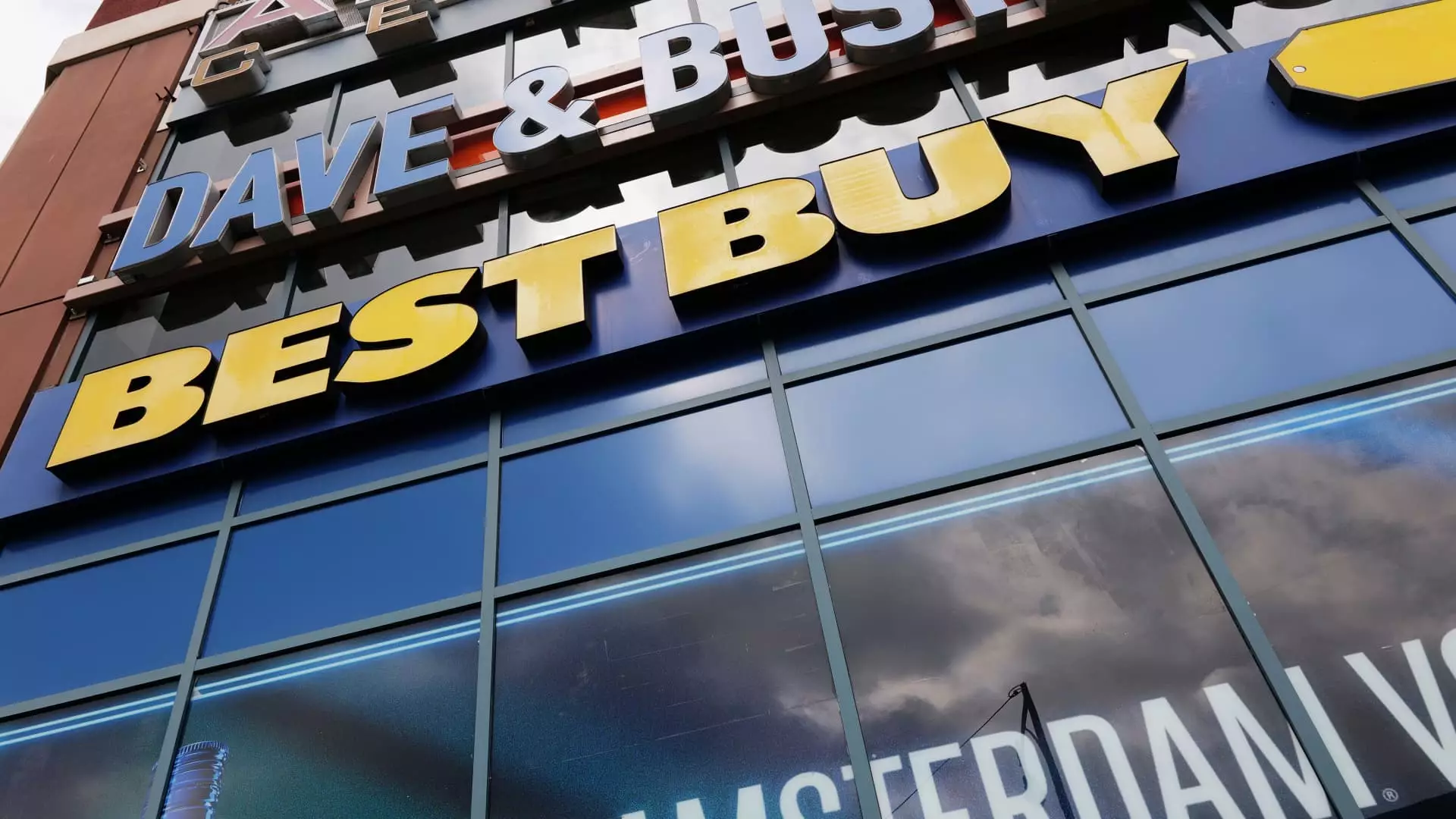Best Buy recently released its quarterly sales results, with revenue falling short of Wall Street’s expectations. The consumer electronics retailer faced softer demand for consumer electronics, which led to a drop in net sales. While the earnings per share exceeded analysts’ estimates, the company highlighted a range of challenges it is currently grappling with.
Despite the sales miss, Best Buy reported higher profits and lower costs in its latest quarterly report. The company’s net income for the three-month period increased slightly compared to the previous year. Additionally, the retailer reiterated its full-year forecast, expecting revenue to range within specific figures. The forecast also indicated a decline in revenue compared to the prior fiscal year.
CEO Corie Barry expressed optimism about industry stabilization in the coming year, with expectations of improving sales trends over the next three quarters. However, she acknowledged several challenges that Best Buy continues to face, including persistent inflation, high mortgage rates, and the lingering effects of increased tech spending during the pandemic.
Best Buy noted a slowdown in sales, attributing it to the aftermath of heightened sales during the pandemic. The retailer has been patiently waiting for the normalization of replacement cycles for various products, such as laptops and kitchen appliances. Additionally, the company is eagerly anticipating the launch of new tech gadgets to drive customer traffic to its stores and website.
Response to Changing Market Conditions
In response to shifting market conditions, Best Buy is strategizing with the introduction of new devices and planned sales events to boost sales. The company is actively engaging with customers and catering to their preferences with promotions and discounts, especially in categories such as major appliances. Recognizing the impact of inflation on consumer behavior, Best Buy is focusing on value-driven purchases.
To address cost concerns and drive growth, Best Buy has implemented measures such as slashing spending, including layoffs to reduce expenses. The retailer is investing in areas like artificial intelligence to streamline operations and enhance the customer experience. With a refreshed approach to store renovations and vendor partnerships, Best Buy aims to improve all locations efficiently.
Financial Outlook and Market Value
Looking ahead, Best Buy adjusted its full-year capital expenditures forecast and closed the quarter with a slight decrease in market value. The retailer continues to navigate market challenges, while focusing on innovation, cost reduction, and strategic growth initiatives to enhance its position in the competitive consumer electronics industry.
While Best Buy faced sales challenges in its recent quarterly report, the company remains committed to driving profitability, reducing costs, and adapting to evolving market trends. As it looks towards the future, Best Buy’s strategic initiatives and financial outlook position it for continued success in the dynamic retail landscape.

